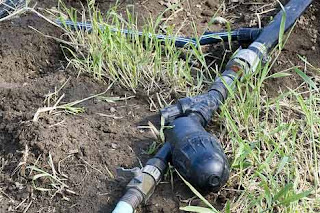What is Irrigation?
It is the process by which water is brought to land through any of a variety of artificial means.
Irrigation System
Why was Irrigation Invented?
It was created so the land that usually contains crops, grass or vegetation and it would not usually receive enough water from rainfall or other natural sources could get irrigated. Sometimes the reason to irrigate a portion of land is that it happens to be a dry season with less than average amounts of rainfall, while other times it is necessary to do so because that land never would receive enough water on its own to be fertile. The water that is used for irrigation may be taken from nearby lakes, reservoirs, rivers or wells. The amount of water that is to be used for irrigation is dependent on the type of crop that is being farmed as well as the amount of rainfall associated with the climate of the region where the farm is located. There are some countries in the world where water is used for irrigation more than it is used for other purposes. In the United States, about a third of the total amount of water that is used each year is utilized for the purpose of irrigation.
Irrigation Canals in Mesopotamia
When, Where and Who invented Irrigation?
It is believed that it was invented about 5,500 to 8,000 BC. in Mesopotamia (currently located in Iraq), by Sumerians of Mesopotamia.
A Sumerian farmer surveying his irrigation system.
Ancient Mesopotamia
In water wheel history recorded by ancient Mesopotamia, irrigation machines are referred to in Babylonian inscriptions, but without details on their construction, suggesting that water power had been harnessed for irrigation purposes. The primitive use of water-rotated wheels may date back to Sumerian times, with references to a "Month for raising the Water Wheels", though it is not known whether these wheels were turned by the flow of a river.






No comments:
Post a Comment